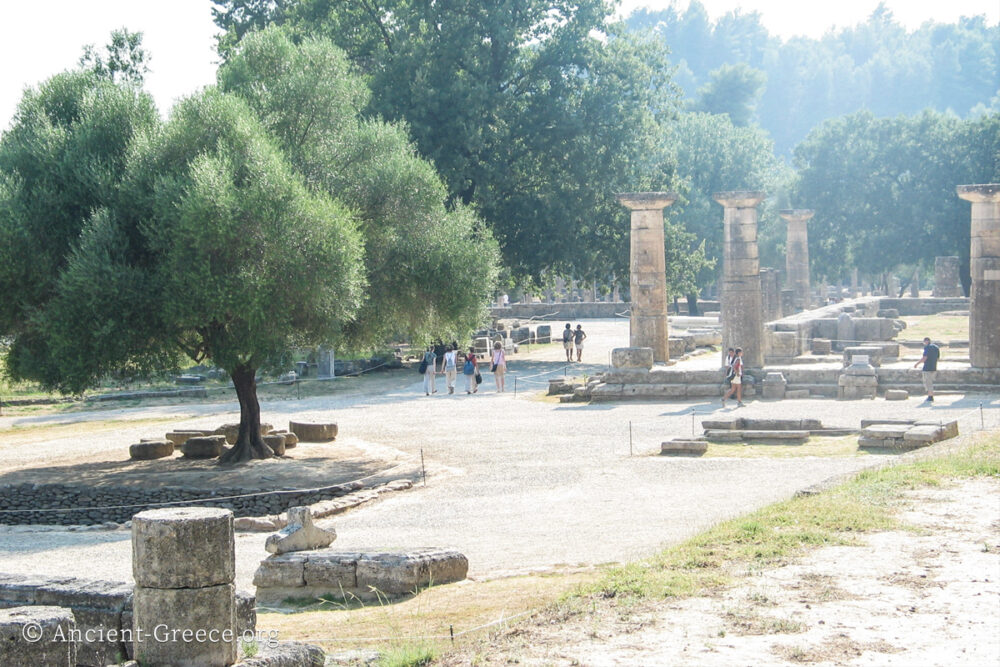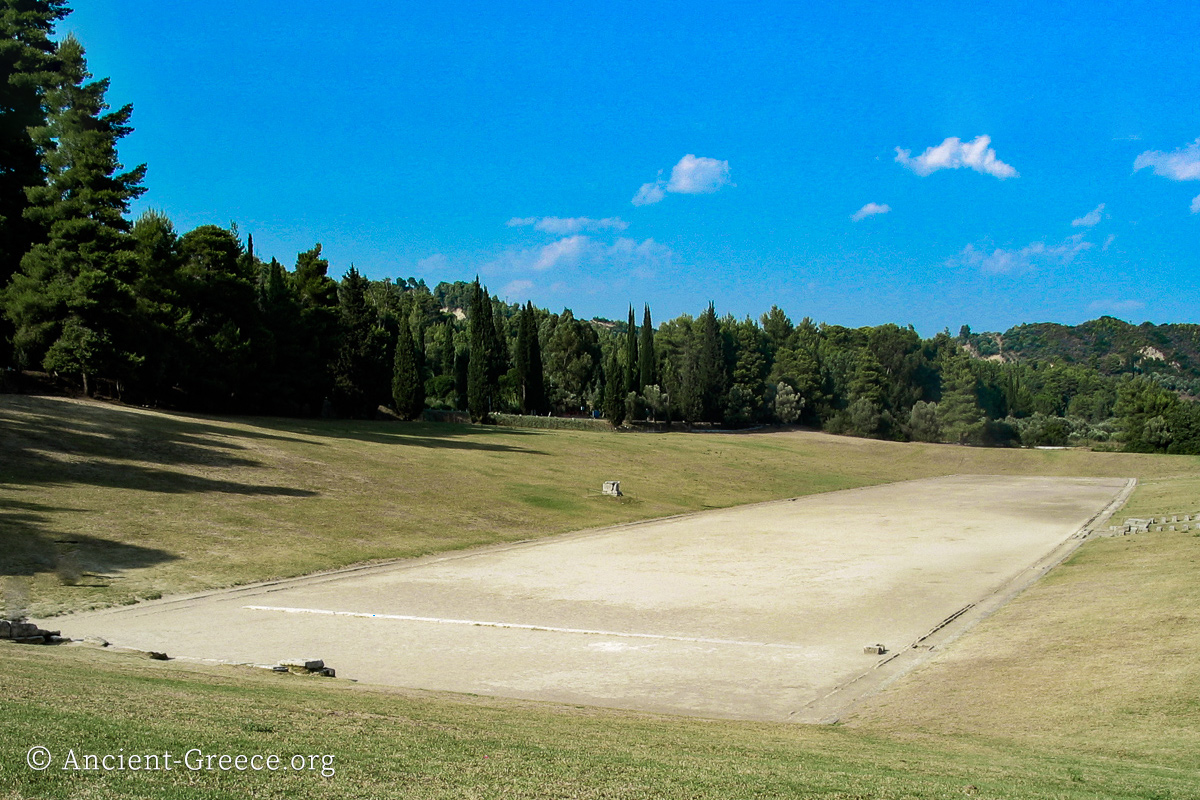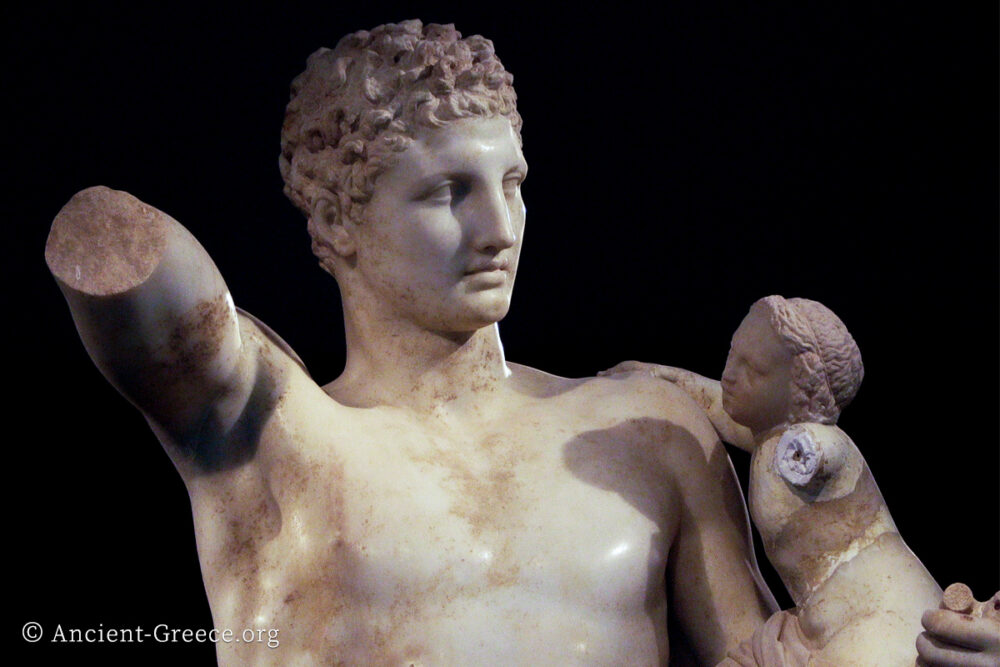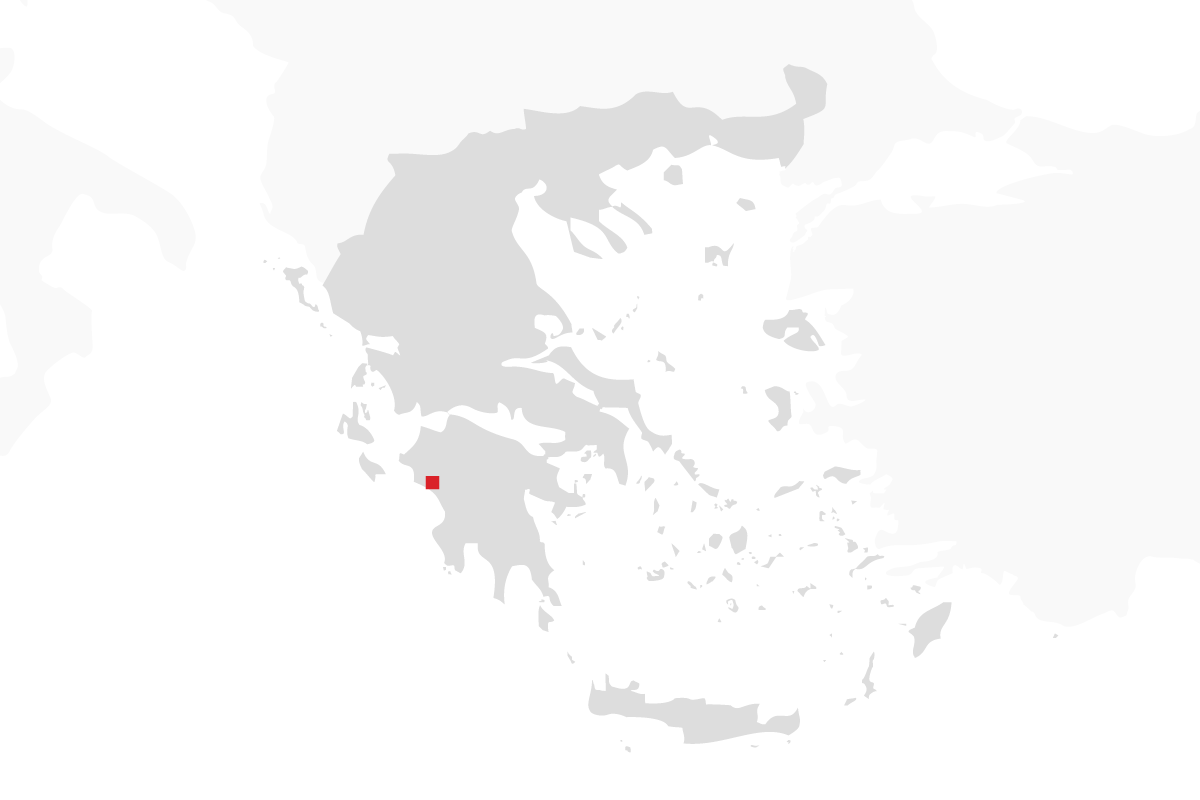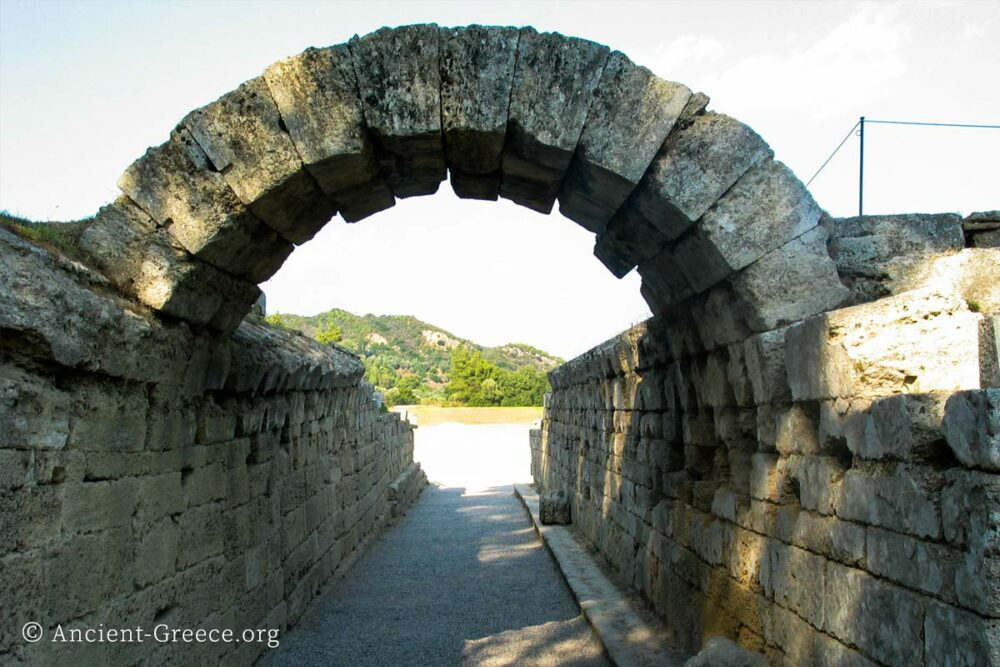
On this page:
The sanctuary at Olympia (Ολυμπία) is positioned in a serene and fertile valley between the Alpheios and the Kladeos rivers in western Peloponnese, in Elis.
In antiquity it was the host of the Olympic games for a thousand years, and helped forge a Hellenic identity among far away cities and states of Greece.
Today ancient Olympia is one of the major archaeological sites in Greece, and its museum shelters some of the most important art and artifacts from antiquity.
Habitation and Worship
Early habitation of the area dates back to the 2nd millennium BCE or earlier (Adronicos, 5). In these early times Kronos, father of Zeus, was worshiped on the Kronion hill that dominates the northern side of the sanctuary, alongside several other sanctuaries dedicated to revered female deities like Aphrodite, Ourania, Eileithyia, and the Nymphs. The earliest known sanctuary and oracle was the Gaion which was dedicate to the goddess Gaia (Earth) and to her daughter Themis.
The mythical hero Pelops was also venerated, perhaps since the earlier times–and his temenos named Pelopion is the oldest known monument in the Altis–along side Zeus whose cult became prominent at the end of the Mycenaean period. By the classical era the sanctuary was purely considered as belonging to Zeus, father of the gods, but other deities never disappeared as evident by the plethora of different altars (Pausanias identified 69). Strabo attributed the early success of the sanctuary to its oracle, which was under the care of the Iamidai and the Klytiadai families for several generations.
Zenith and Importance
With its embrace of a wide gamut of deities, and with the organization of the athletic games known as the Olympics, the sanctuary is considered one of the main contributors to the Greeks developing their sense of belonging to their unifying Hellenic culture. It was important that they came together in such events to reinforce their common Hellenic identity because for the most part they resided in a geography that was more conducive to isolation.
As the games grew in fame over time, so did the sanctuary at Olympia. The grounds of the Altis became adorned with offerings by wealthy individuals, athletic event winners, and states who constructed treasuries to shelter their votive offerings. The treasuries were built mostly during the Archaic era at the foot of Mt. Kronion, and the only monumental building was the temple of Hera which was built in 600 BCE.
Nested among the trees in an unobtrusive manner were smaller buildings like the Bouleuterion and the Prytaneion. Other features of the sacred grove included the altar of Zeus, the Hippodameion, the tomb of Pelops, the stadion, and the hippodromos.
In 472 BCE the sanctuary saw a flurry of building and renovating activity, and the temple of Zeus was erected shortly thereafter (dedicated in 457 BCE), during a time when Olympia reached its zenith. The temple of Zeus was adorned with some of the best examples of Greek art of the early Classical Era, bestowed with sculptures in-the-round on its pediments and deep reliefs on the metopes. The famous sculptor, Pheidias was the creator of the gold and ivory statue of Zeus which was appeared seated on a throne inside the temple. This statue was included in the seven wonders of the ancient world.
During this short period of building activity the sanctuary became saturated with a number of buildings and various constructions. These included the Gymnasion, Leonidaion (a guest house named after its donor), the Palaistra, and public baths. Philip II, built an elegant Ionic Tholos (the Philippeion) to host the statues dedicated by the Macedonians. A multitude of votive offerings (statues, tripods, etc.) filled the spaces between buildings. More construction followed in the following centuries, and the Romans added a number of new buildings and structures during their administration.
Decline
The sanctuary gradually began losing its luster in late Hellenistic times, and diminished early in the Roman era. In 86 BCE Sulla plundered the sanctuary, but once Roman rule was secured in Greece Olympia enjoyed a revival through imperial sponsorship and even direct patronage. A new flurry of construction occurred in the 2nd century CE and Herodes Atticus built an aqueduct around 173 CE. The threat of barbarians prompted the construction of a defensive wall around the temple of Zeus and the Bouleuterion.
After the 293d Olympiad (1169 years after their official inauguration), in 393 CE, emperor Theodosius I banned the games and ordered the sanctuary be torched because they were connected with pagan deities in an era when christian religion was becoming dominant throughout the Roman empire.
Shortly thereafter, the ancient workshop of Pheidias was converted into a Christian basilica. A strong earthquake leveled much of the site in 551 CE, and the entire sanctuary was subsequently buried by silt from the rivers Alpheios and Kladeos in the 7th century CE.
The location of Olympia was lost to the next thousand years until 1776 when the site was identified by the Englishman Richard Chandler. The ruins of Olympia saw the light of day again when excavations of the site began by German archaeologists in 1875. Archaeological research and excavation of the area continues to our day.






